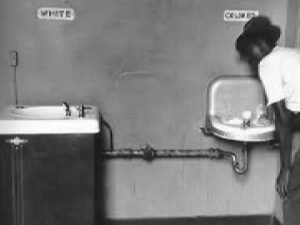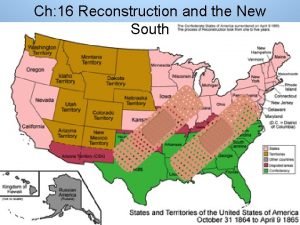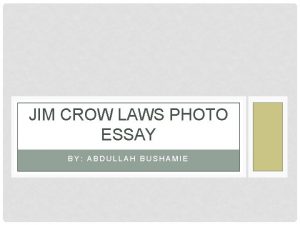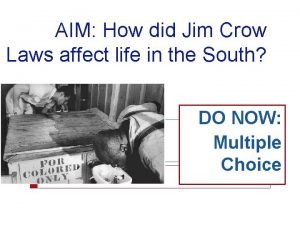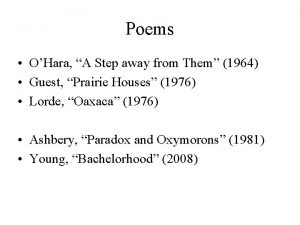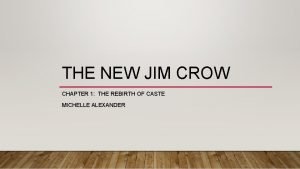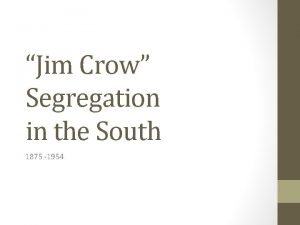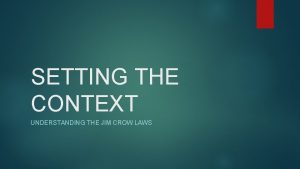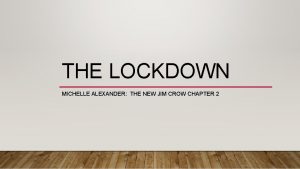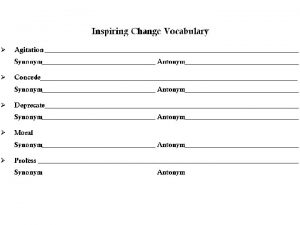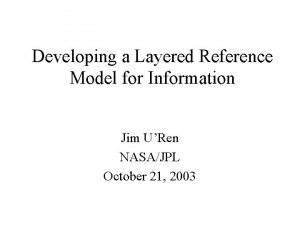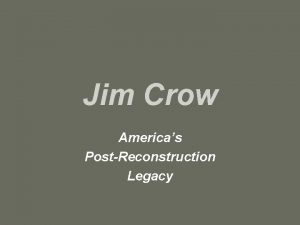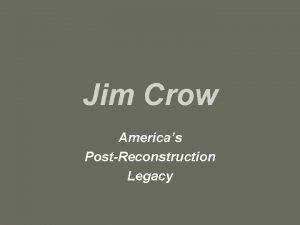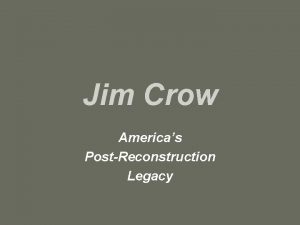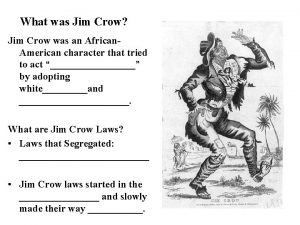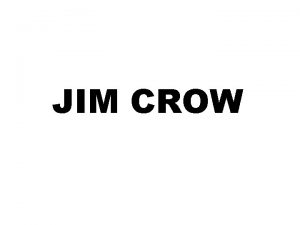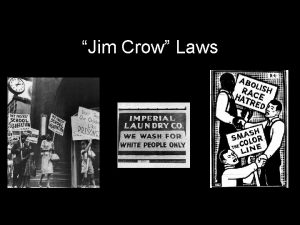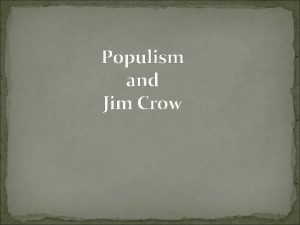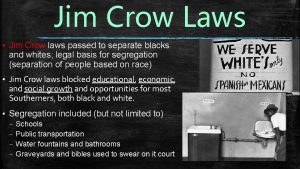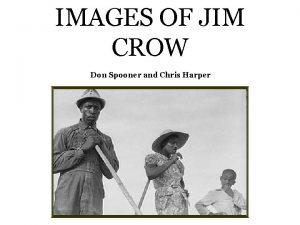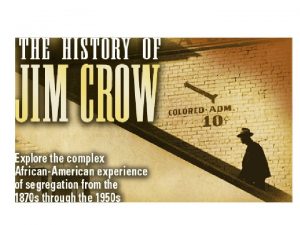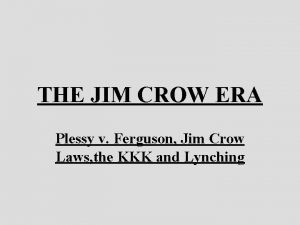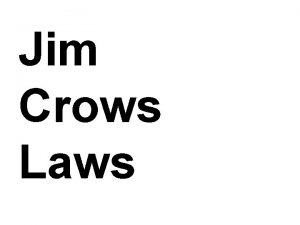IMAGES OF JIM CROW The Jim Crow figure




















- Slides: 20

IMAGES OF JIM CROW

The "Jim Crow" figure was a fixture of the minstrel shows that toured the South; a white man made up as a black man sang and mimicked stereotypical behavior in the name of comedy. http: //www. jimcrowhistory. org/scripts/jimcrow/gallery. cgi? collection=crow

Sheet music cover illustration with caricatures of ragged African-American musicians and dancers. 1847 http: //www. jimcrowhistory. org/scripts/jimcrow/gallery. cgi? collection=crow

What were Jim Crow laws? From the 1880 s into the 1960 s, most American states enforced segregation through "Jim Crow" laws (so called after a black character in minstrel shows). From Delaware to California, and from North Dakota to Texas, many states (and cities, too) could impose legal punishments on people for mingling with members of another race. The most common types of laws forbade intermarriage and ordered business owners and public institutions to keep blacks and whites separated.

Some Facilities that Were Separate: §Bus station waiting rooms and ticket windows §Railroad cars or coaches §Restaurants and lunch counters §Schools and public parks §Restrooms and water fountains §Sections of movie theaters §There were even separate cemeteries

At the bus station, Durham, North Carolina, 1940.

Greyhound bus terminal, Memphis, Tennessee. 1943.

A rest stop for bus passengers on the way from Louisville, Kentucky to Nashville, Tennessee, with separate entrance for Blacks. 1943.

A sign at bus station, Rome, Georgia. 1943.

A highway sign advertising tourist cabins for Blacks, South Carolina. 1939.

Cafe, Durham, North Carolina. 1939.

Drinking fountain on the courthouse lawn, Halifax, North Carolina. 1938.

Movie theater’s "Colored" entrance, Belzoni, Mississippi. 1939.

The Rex theater for colored people, Leland, Mississippi. June 1937.

Restaurant, Lancaster, Ohio. 1938.

Water cooler in the street car terminal, Oklahoma City, Oklahoma. 1939.

Sign above movie theater, Waco, Texas. 1939.

Beale Street, Memphis, Tennessee. 1939.

Plessy v Ferguson • Supreme Court case that established “separate but equal” and thus made segregation legal.

Two Types of Segregation • De facto: Segregation that isn’t required by law but exists naturally due to social conditions…for example, a city that is a majority of one race will have schools that are a majority of the same race. • De jure: Segregation required by law
 Elements of counselling
Elements of counselling Jim crow cartoon character
Jim crow cartoon character Jim crow character
Jim crow character Jim crow states
Jim crow states Main idea
Main idea Apartheid vs jim crow venn diagram
Apartheid vs jim crow venn diagram Jim crow photo essay
Jim crow photo essay Jim crow laws definition
Jim crow laws definition A step away from them frank o'hara
A step away from them frank o'hara Jim crow shorthand for separation
Jim crow shorthand for separation Racial etiquette region
Racial etiquette region Jim crow pictures
Jim crow pictures The new jim crow chapter 1
The new jim crow chapter 1 Jim crow laws
Jim crow laws Childish gambino jim crow
Childish gambino jim crow Segregation images
Segregation images Understanding jim crow (setting the setting)
Understanding jim crow (setting the setting) The new jim crow chapter 2
The new jim crow chapter 2 Jim crow
Jim crow Jim crow laws
Jim crow laws Jim crow laws defintion
Jim crow laws defintion

